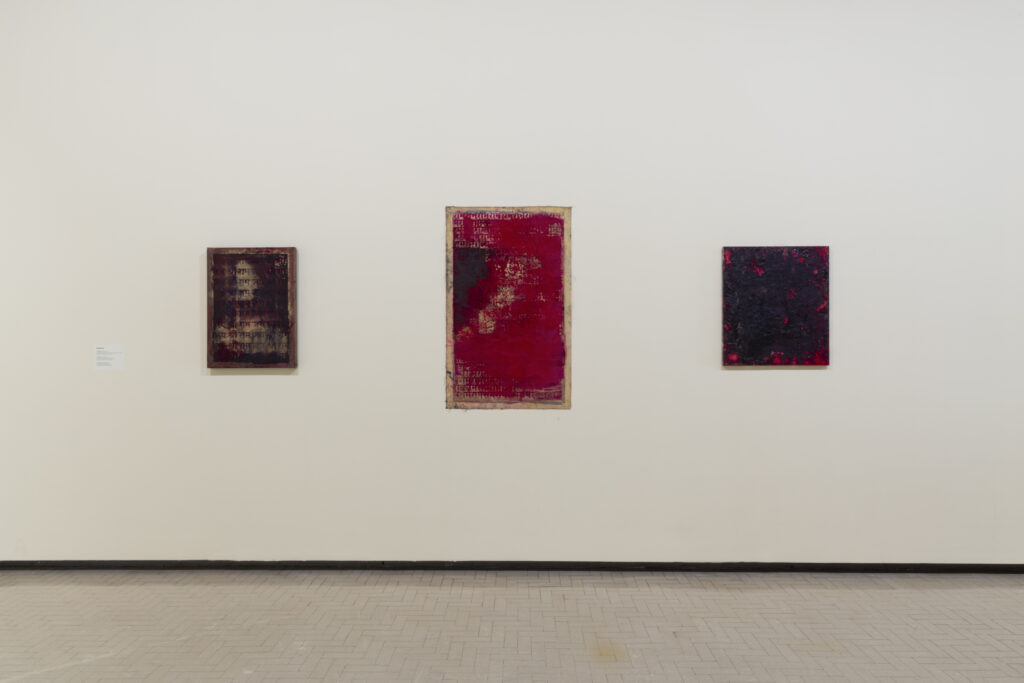Fiona Clark, Kirtika Kain, Rozana Lee, Sriwhana Spong and Hōhua Thompson.
Memory Lines brings together the work of five contemporary artists to consider the relationship between memory, knowledge and art-making. These artists use photography, film, sculptural installation, textiles and painting to traverse the terrain of epistemology, exploring the power and potential that art holds to preserve, transmit and interrogate our ways of knowing.
Fiona Clark is one of Aotearoa New Zealand’s leading photographers, whose work as an artist is intrinsically linked with her work as an activist. Clark’s photographs, made across a career spanning more than five decades, serve as a visual record of the knowledge embedded in the places, people and communities she pictures.
Kirtika Kain is a Sydney-based painter whose work often reflects upon collective memories held across the Dalit diaspora. Her sensorial painting practice incorporates materials such as sindoor pigment, beeswax, tar and gold to build a visual language that is at once richly evocative and densely symbolic. Memory Lines is the first time that Kain’s work has been exhibited in Aotearoa.
Rozana Lee’s practice often considers the power of pattern, material and form to hold cultural memory and reveal overlooked or omitted history. Her batik works, for instance, fuse together a range of symbolic imagery to question notions of originality, belonging and home through the frame of migrant experience.
Much of Sriwhana Spong’s recent practice has been shaped by her research into medieval women mystics, such as Hildegard von Bingen (1098-1179). Through spoken word, sound, sculpture and visual imagery, Spong’s work navigates the complexity of women’s relationships to power as it has been codified by society.
Hōhua Thompson’s (Te Aitanga-a-Hauiti, Ngāti Kahu, Ngāti Awa, Ngāti Rangiwewehi) large-scale installation practice frequently draws on pūrākau and pakiwaitara handed down to him through his whakapapa. For this exhibition, Thompson has created a significant new installation, which reflects on generational knowledge transmission, storytelling and kaitiakitanga.
Memory Lines issues a quiet, yet insistent, provocation. By destabilising the idea of knowledge as either universal or objective, it asks us to consider the capacity of visual and material expression to preserve and transmit memory.
Memory Lines is curated by Dr. Kirsty Baker















































































